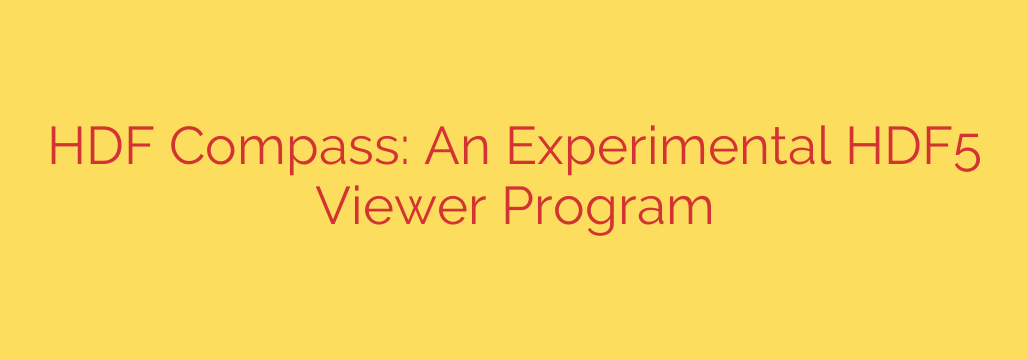
Navigating Complex Data: A Look at the HDF Compass HDF5 Viewer
The Hierarchical Data Format, version 5 (HDF5), is a widely used file format designed to store and organize large amounts of complex data. It’s particularly prevalent in scientific computing, research, and engineering, allowing for efficient storage of everything from massive simulation outputs to intricate experimental results. While powerful, accessing and understanding the structure and content of HDF5 files often requires specialized tools beyond standard file explorers.
This is where HDF5 viewers come into play. They provide a window into the internal world of an HDF5 file, revealing its hierarchical organization of groups and datasets, along with associated metadata. Among the various tools available, a project known as HDF Compass offers an interesting, albeit experimental, approach to visualizing this data.
HDF Compass is conceived as a graphical application aimed at simplifying the process of exploring HDF5 file contents. Its core purpose is to provide a user-friendly interface for navigating the potentially complex structure of these files without needing to write code.
Key functionalities typically expected from an HDF5 viewer like HDF Compass include:
- Visualization of File Structure: Displaying the internal hierarchy of groups and datasets in a clear, tree-like format, similar to navigating folders on your computer. This allows users to quickly understand the organization of the data.
- Dataset Inspection: The ability to select a dataset and view its contents. This might involve displaying the data array, showing its dimensions, data type, and storage layout.
- Attribute Viewing: HDF5 allows attaching metadata (attributes) to groups and datasets. A viewer lets users inspect these attributes, providing crucial context about the data they contain.
- Basic Data Summaries: Often, viewers provide summary information like the size of datasets or the number of elements, helping users quickly assess the scale of the data.
It’s important to note that HDF Compass is described as experimental. This designation implies that the software is likely still in active development. Users should be aware that features may be incomplete, the interface could evolve, and stability might not be on par with more mature, long-established HDF5 viewing applications. Experimental tools are often valuable for providing a glimpse into new approaches or testing new ideas, but they might require a bit more patience and understanding from the user.
For researchers, engineers, or data analysts who regularly encounter HDF5 files, having a viewer is essential for initial data exploration and verification. Tools like HDF Compass aim to make this process more accessible, allowing users to quickly peek inside their HDF5 files, understand the data layout, and inspect crucial metadata before diving into programmatic analysis.
While still experimental, projects like HDF Compass highlight the ongoing need for intuitive tools to interact with complex data formats like HDF5. Exploring such viewers can be a great way to become more comfortable with the HDF5 ecosystem and enhance your data management workflow.
Source: https://www.linuxlinks.com/hdf-compass-experimental-viewer-program-hdf5/








